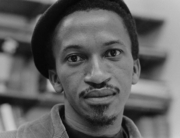A little over two years ago, as I sit writing this, Russia fully invaded Ukraine. This was perhaps the most dramatic step in a process that began in 2014 with the annexing of Crimea, and the war still is not over. Whether or how to give Ukraine aid has become a contentious subject in the U.S. government. Last April, a certain U.S. congresswoman opposed supporting the nation, declaring Ukraine was “not the 51st State.”
One of Russian President Vladimir Putin’s first targets was the city of Mariupol. At this time two years ago, the siege was well underway, with no end in sight. Though Putin claimed that he would not target the city’s civilians, they quickly discovered that this was a lie. Some managed to flee. Many did not—there were no purposely built bomb shelters in Mariupol. Those remaining were forced to endure a deliberate assault on their lives, the bombing of their homes, hospitals, public spaces, and further intimidation by the cutting of WiFi, water, gas, and electricity. This is all putting it lightly.
Filmmaker Mstyslav Chernov, working with Frontline and the Associated Press, remained in Mariupol for 20 days during the beginning of the siege to document everything he could on camera before he was forced to flee in order to preserve his footage. Many of these videos were made available to the Associated Press as quickly as they could be sent.
I will be honest: This is a hard film to approach from the perspective of a reviewer. Whatever critical distance one might seek to maintain is quickly clawed away by its naked view of human suffering. I have probably never seen anything more traumatizing on film, and would be hard pressed to argue that it should be otherwise. Chernov and his team, risking their lives, not only remained in the city, but seem to have made a concerted effort to document the atrocities they saw: mothers crying over the corpse of their slaughtered toddlers; a father wailing over the body of his legless son; maternity hospitals being evacuated with bleeding, unconscious pregnant women. Some people are angry at Chernov for filming them. Others speak to the camera directly. One doctor trying to save a toddler demands that the world see exactly what Putin is doing. One woman screams at the filmmaker through a tear-stained face, “What am I supposed to tell you? That I’ve been living in Hell?” Praising Chernov’s bravery is so obvious it feels impertinent, as does describing his film with the trite phrase “necessary viewing.”
All the footage is filmed, sometimes with an understandably shaky camera, with Chernov’s commentary detailing the specifics of the conditions (how far he had to travel to get an internet connection, how long people have gone without resources). His purpose, which becomes clearer as the film progresses, is not merely to document suffering, but to reveal crimes against humanity as they occur.
What Chernov achieves, indisputably, is to create a picture of civilian life as it is being deliberately terrorized. The viewer cannot come away from this experience without realizing this suffering is not the byproduct of a war, but the direct result of Putin’s tactics. Chernov forces us to look at the most frightening and horrifying aspects of the lives of those who are condemned to endure it and, in doing so, provides a more visceral and vivid understanding of it than anything else can—besides living it. It is fashionable, and sometimes necessary, these days to take a break from the news. 20 Days in Mariupol is a bracing reminder of what we are looking away from when we make that choice.







Leave A Comment